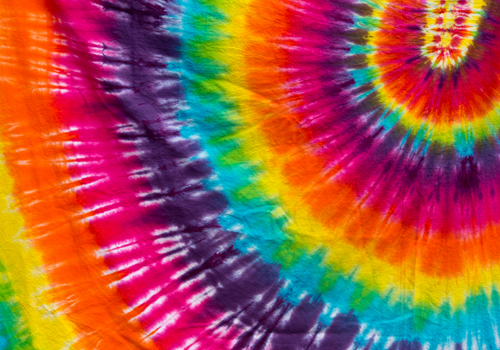The textile industry in India has a colourful history comprising of diverse techniques and traditions. Bandhani is not merely a fabric; soaked in several colours, it is a companion for several womenfolk of the country. 'Tie and dye' or Bandhani is derived from the Sanskrit word 'bandh', meaning 'to tie'. The people who are involved in producing the designs on the fabric are known as 'Bandhej'. It is a popular and widespread textile art from the states of Gujarat to Rajasthan in India.
Different communities in Rajasthan have followed the tradition of wearing turbans with different patterns, making it easy to identify which community they belonged to. In the earlier days, the dyes were extracted from roots, leaves, flowers and berries.
'Tie and dye' as the name suggests first involves the tying of the fabric, usually cotton or silk, with thread at certain points and then submerging it into drums of colourful dyes. The fabric is then twisted and turned in the desired way. Each fold gives a different look altogether to create a range of patterns such as Mothra, Leheriya, Shikari and Ekdali.

This practice makes sure that no two tie-dyed cloths are the same, making each product truly unique. Fascinating motifs are created that include creepers, flowers, bells, webs and much more. An interesting aspect of the process is the local name given to each pattern according to the shapes they form.
Creating new motifs reflect the artistic sentiment and the innovative spirit of the artisans. Yet another interesting aspect of the process is that the artists grow a long nail or wear a ring with a tip on it on their little finger to push the cloth upwards to form a point that would be tied and left uncoloured.
The dominant colours in Bandhani are bright yellow, red, green, pink and maroon. Different colours convey different meanings in the world of Bandhani. While red represents a bride or a newly married girl, a yellow background conveys a lady who has recently delivered a child. The colours and patterns also indicate the community that the girl belongs to.
In Hindu tradition, a 'gharchola' is a saree woven with gold or silver zari thread, embellished with Bandhani, that a man gives to his bride, and the tie-dyed veil worn by the bride is known as a 'chunri'. Muslim brides, on the other hand, wear the 'chandrokhani'. Countless artisans have experimented with the process and it certainly looks like this textile art is here to stay!